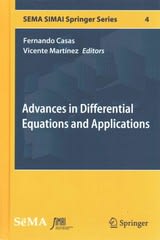Answered step by step
Verified Expert Solution
Question
1 Approved Answer
The indefinite integral displaystyle int sqrt{1+tan^2(x)},dx can be found using more than one method. A student uses trigonometric identities and integration by substitution to give
The indefinite integral \displaystyle \int \sqrt{1+\tan^2(x)}\,dx can be found using more than one method. A student uses trigonometric identities and integration by substitution to give the result \displaystyle \int \sqrt{1+\tan^2(x)}\,dx = \dfrac{1}{2}\ln |1+\sin(x)| - \dfrac{1}{2} \ln |1-\sin(x)| +C where C is a constant of integration. Select the appropriate combination of trigonometric identities and substitution that the student could have chosen to give the result found above. Question 30Select one: 1+\tan^2(x) = \sec^2(x),\,\,\sec(x) = \dfrac{\cos(x)}{\cos^2(x)},\,\,\sin^2(x) + \cos^2(x) = 1 and u = \sin(x). \sin^2(x)+\cos^2(x) = 1,\,\,\tan(x) = \dfrac{\sin(x)}{\cos(x)},\,\,\sin(2x) = 2\sin(x)\cos(x) and u = \sec(x). 1+\tan^2(x) = \sec^2(x),\,\,\sec(x) = \dfrac{\cos(x)}{\cos^2(x)},\,\,\sin(2x) = 2\sin(x)\cos(x) and u = \cos(x). \sin^2(x)+\cos^2(x) = 1,\,\,1+\tan^2(x) = \sec^2(x), and u = \sec(x). \sin^2(x)+\cos^2(x) = 1,\,\,\sin(2x) = 2\sin(x)\cos(x) and u = \sin(x)
Step by Step Solution
There are 3 Steps involved in it
Step: 1

Get Instant Access to Expert-Tailored Solutions
See step-by-step solutions with expert insights and AI powered tools for academic success
Step: 2

Step: 3

Ace Your Homework with AI
Get the answers you need in no time with our AI-driven, step-by-step assistance
Get Started


